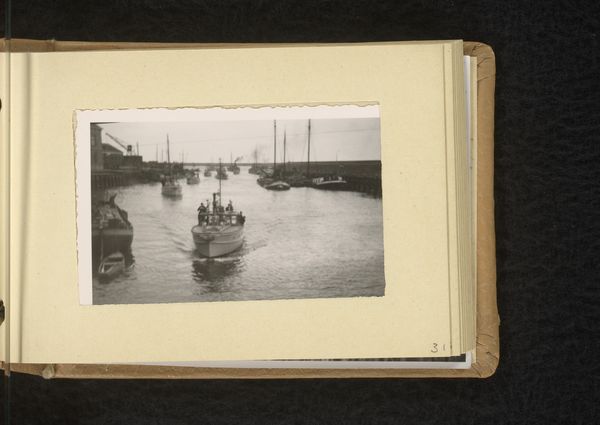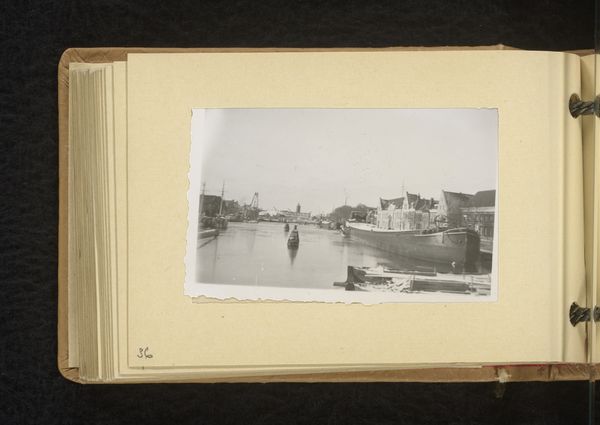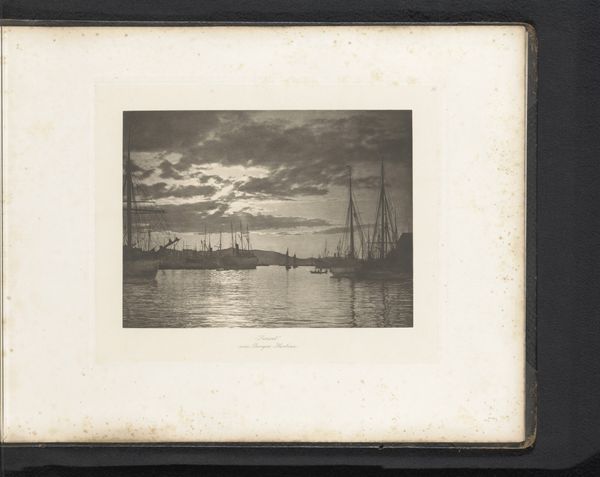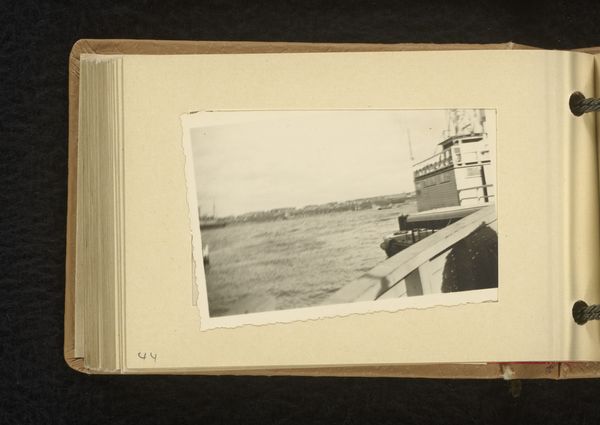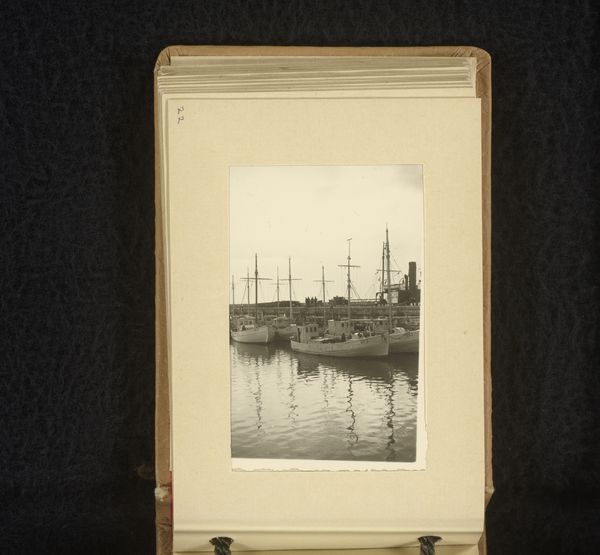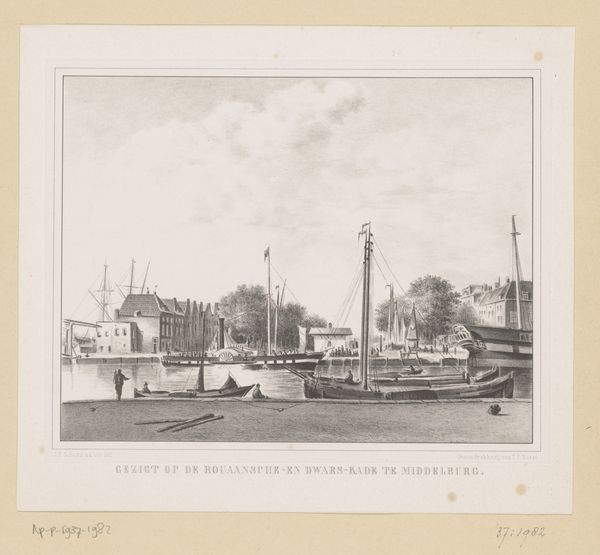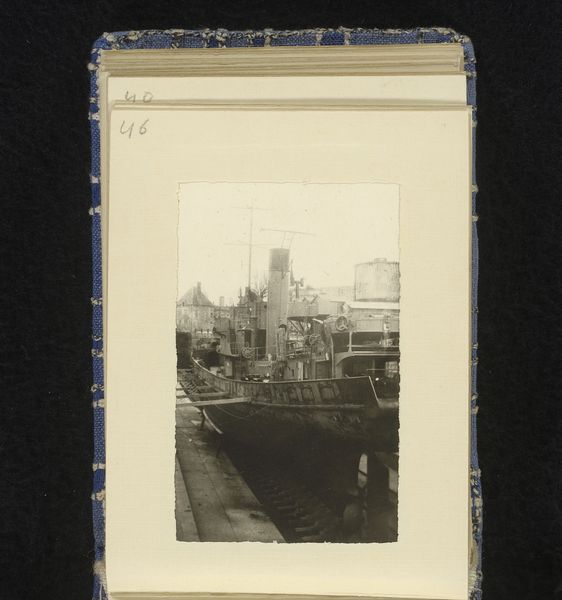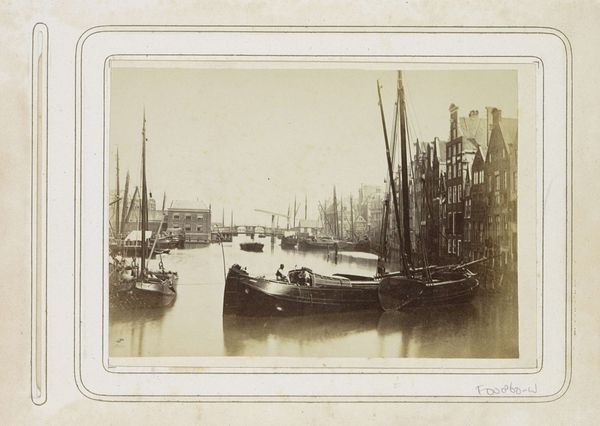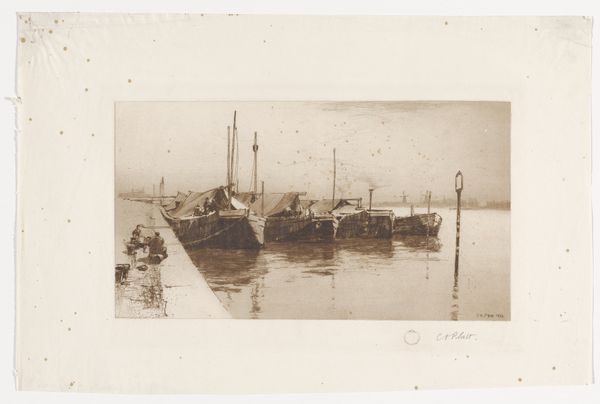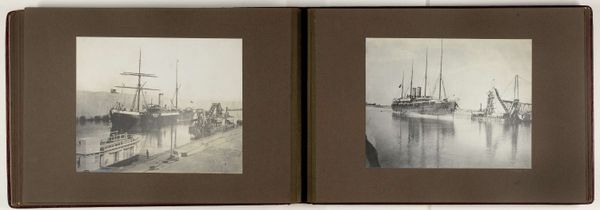
photography, gelatin-silver-print
#
portrait
#
still-life-photography
#
landscape
#
photography
#
gelatin-silver-print
Dimensions: height 60 mm, width 90 mm, height 85 mm, width 120 mm
Copyright: Rijks Museum: Open Domain
Curator: This gelatin-silver print, titled "Schepen van de Kriegsmarine," was created by an anonymous artist sometime between 1940 and 1943. It now resides here at the Rijksmuseum. What are your initial thoughts? Editor: A somewhat somber feeling washes over me. The grey tones emphasize a muted, almost melancholic atmosphere. It’s stark but feels incredibly significant as a record of a particular moment. Curator: Absolutely. Its creation during the Second World War frames its meaning significantly. "Schepen van de Kriegsmarine," ships of the German Navy, presented in this style forces questions about authorship and the social narratives surrounding images from war. What were the circumstances, the biases, influencing its creation and preservation? Editor: Precisely. The composition itself, though seemingly straightforward, is worth noting. The single boat heading directly toward us is foregrounded. The photographer must be in or near the water to take the shot, that also introduces a power dynamic—someone is viewing this display of naval power and technology from very nearby, a visual statement perhaps. What might have the person on that boat thought? Curator: That resonates deeply. We see a still image but, what of the real person. It compels one to think about not only naval activity but also who this photographer could have been, where he lived, and for whom he was taking the photo. Who was viewing the scene and is their identity important? Editor: There’s a certain haunting quality. It leaves one with the lingering impression of wartime landscapes and waterscapes—a quiet unease. Curator: Considering how institutions like this one can preserve such potent images, ones filled with multiple intersecting angles of thought, helps give context. It prompts us to acknowledge our contemporary understanding of the period and that maybe these moments need reflecting. Editor: Yes, understanding how institutions interpret and present such images can really help shed light on that period. It's a sobering reminder, I'll agree.
Comments
No comments
Be the first to comment and join the conversation on the ultimate creative platform.
